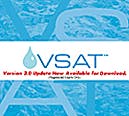EPA’s Water Security Division on April 30 released the final two modules of its Response Protocol Toolbox, intended to help water utilities plan for and respond to contamination threats and announced the release of a software update to the Vulnerability Self-Assessment Tool (VSAT) that covers water utility emergency response plans (ERPs).
Rounding out four modules released last year covering utility planning, threat management, site characterization/sampling and sample analysis, the fifth and sixth modules cover issues related to public health response and remediation and recovery.
Designed to help the water supply sector respond to intentional contamination threats and incidents, the toolbox modules were produced by USEPA in conjunction primarily with experts from Metropolitan Water District of Southern California and intended to be adopted on a voluntary basis by utilities, laboratories, emergency responders, state drinking water programs, technical assistance providers and public health and law enforcement officials.
The 83-page Module 5 Public Health Response Guide is organized into eight sections that include an introduction, an overview of public health response organizations and actions and descriptions of public health consequences due to water contamination, operational response options, a public notification strategy, short-term alternative water supply options and returning to normal operation. It also includes a compendium of references and resources and appendices of supportive forms and tools.
The 112-page Module 6 Remediation and Recovery Guide details a process that should be used for confirmed contamination incidents by people involved in systems characterization, risk assessment and remedial response, including utility emergency response managers, state drinking water program managers, public health officials, technical assistance providers and specialized remediation teams.
It is organized based on a process flow chart that covers the following topics: ensuring a long-term alternative supply; conducting a system characterization/feasibility study, assessing risks, analyzing alternatives, selecting a remedy, preparing a remedial design, undertaking remedial action, conducting post-remediation monitoring and an operations assessment and providing public communication.
Developed by the Association of Metropolitan Sewerage Agencies (AMSA) with USEPA funding, the updated VSAT includes a new module intended to help water utilities create, update and/or revise their emergency response plans (ERPs), which must be certified as completed within six months following their particlular deadline for submitting vulnerability assessments under the 2002 Bioterrorism Act.
The module complements both the water and water/wastewater versions of existing VSAT software by supporting medium and small water utilities in meeting their ERP deadlines. The agency noted that VSAT 3.0 can be used by water utilities regardless of whether they have used VSAT to conduct a vulnerability assessment, adding that VSAT 3.0 users must have the VSAT software to allow the download of the new module.
USEPA recently released ERP guidance for such systems, and AMSA is developing a similar module for wastewater systems.
Source: AWWA's Waterweek

